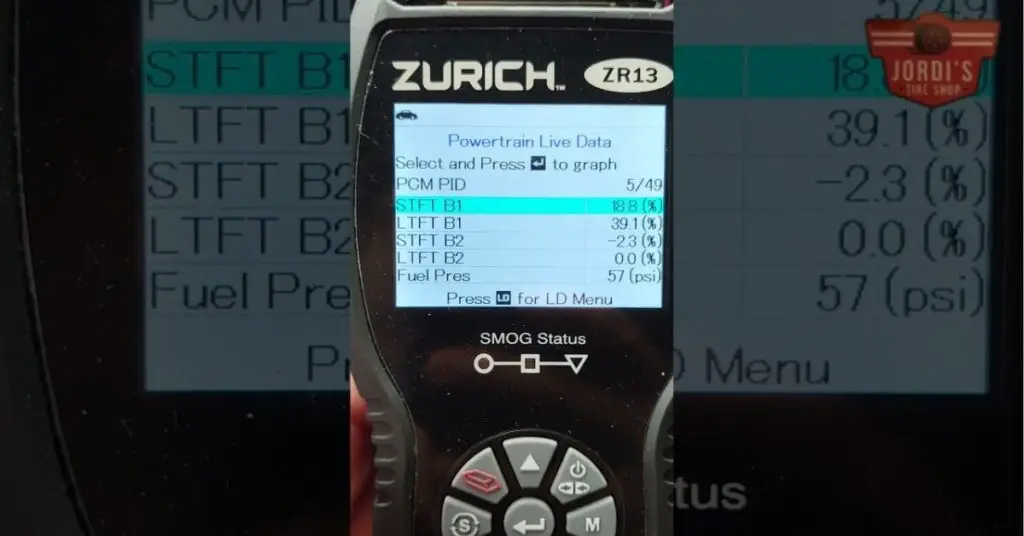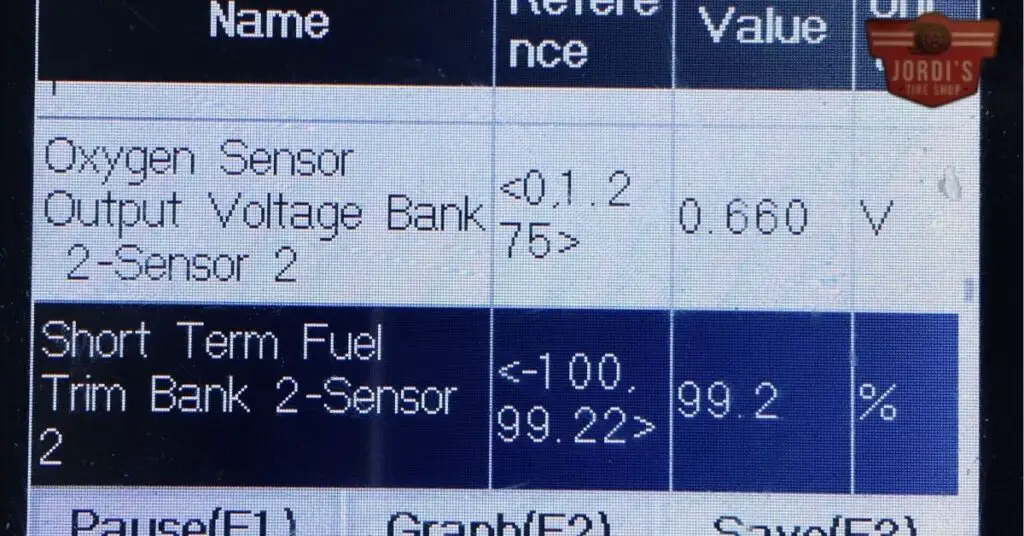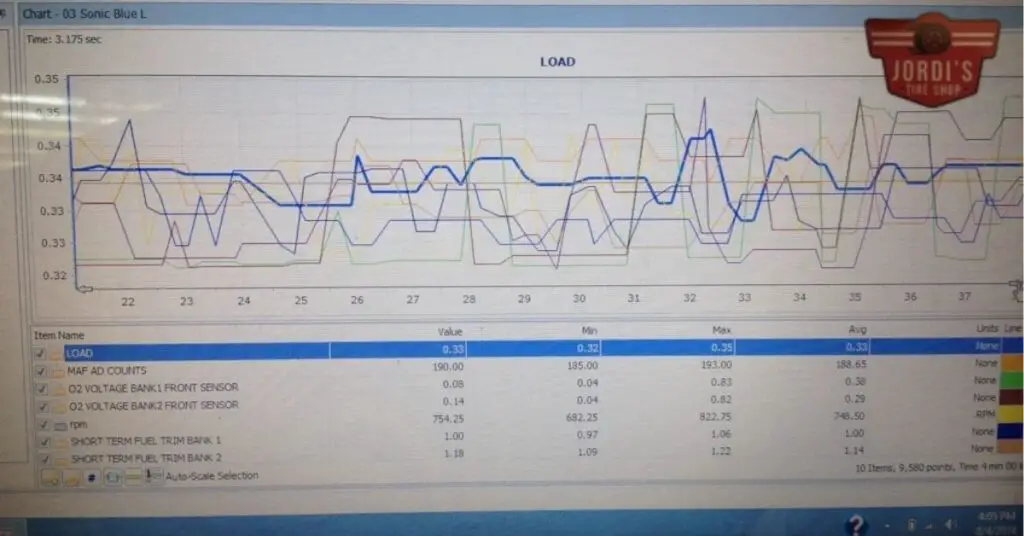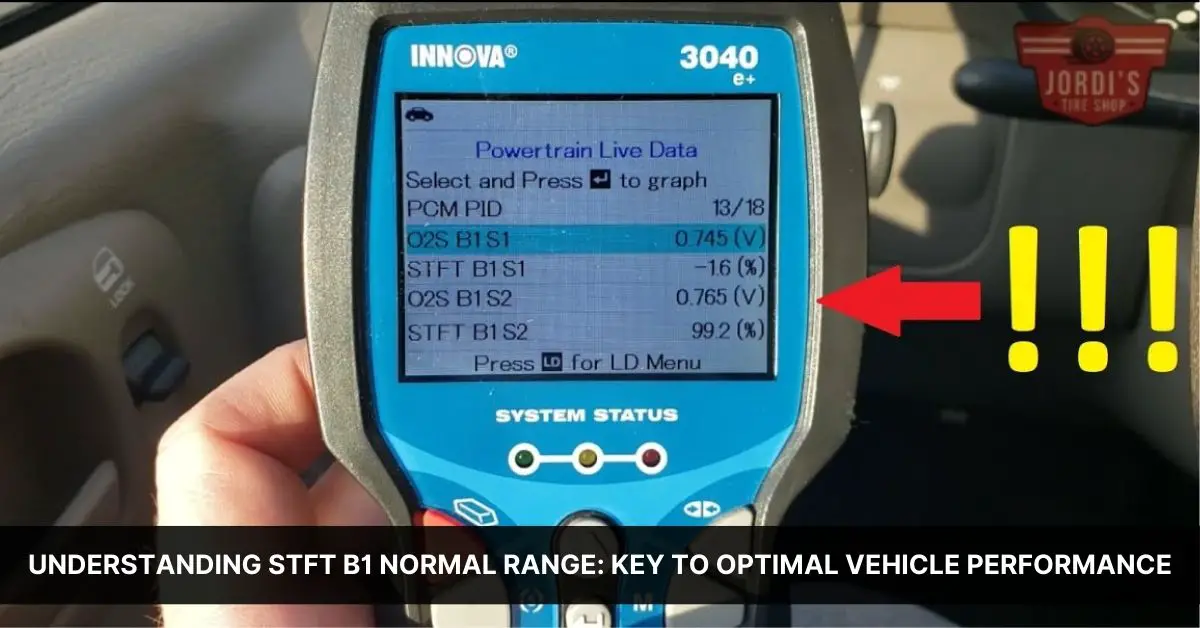Ever wondered about the intricacies of your vehicle’s fuel system? You’re not alone. One term that often pops up is ‘STFT B1’, a concept that’s crucial to your vehicle’s smooth operation. But what does it mean, and more importantly, what’s the normal range for it?
Let’s jump into the industry of Short Term Fuel Trim Bank 1 (STFT B1). It’s a fascinating topic that’s not just for mechanics or car enthusiasts. Understanding it can help you diagnose potential issues with your vehicle, saving you time and money in the long run. Stay tuned as we unravel the mystery behind STFT B1 and its normal range.
Understanding STFT B1

In the area of automotive engineering, STFT B1 holds a key position. It’s critical to understanding your vehicle’s fuel system.
What is STFT B1?
STFT B1, short for Short Term Fuel Trim Bank 1, refers to the real-time adjustments your vehicle’s powertrain control module (PCM) makes to maintain an ideal fuel/air mix. It’s the percentage adjustment from the calculated baseline fuel delivery by your PCM. The values can fluctuate extremely quickly and often, responding to changes in driving conditions and engine performance. Generally, a normal reading falls between -10% and +10%.
The Importance of STFT B1
Monitoring STFT B1 provides invaluable insights into your vehicle’s fuel system. It’s an essential tool for diagnosing potential vehicle issues. Improper Fuel trim can lead to excessive fuel consumption, poor engine performance, and even serious mechanical damage if left unchecked. Trim readings that consistently stray from the normal range indicate an underlying problem with the vehicle’s fuel system. Hence, a proper understanding of STFT B1 is an essential part of maintaining a healthy and efficient vehicle.
Unveiling the STFT B1 Normal Range

Let’s investigate deeper into the ideal STFT B1 range and the factors that can impact it.
The Ideal STFT B1 Range
In a perfectly tuned vehicle, the STFT B1 typically fluctuates around 0%. Yet, a deviation that ranges between -10% and +10% falls within acceptable and normal parameters too. This balance intends to preserve the ideal air-to-fuel ratio of 14.7:1, indicating your car’s system operates at peak efficiency. Although small variations are expected and harmless, substantial constant deviations signal potential mechanical issues that need immediate attention.
| STFT B1 Range | Description |
|---|---|
| -10% to +10% | Normal Operating Range |
| Around 0% | Perfectly Tuned Vehicle |
| Constant Deviation | Potential Mechanical Issue |
Factors Affecting STFT B1 Range
Multiple external and internal factors influence STFT B1 readings, including air quality, fuel quality, and engine condition. For instance, high amounts of contaminants in the air, such as dust or smog, can disturb the ideal combustion process and in turn, affect the STFT B1. Similarly, poor quality fuel may not combust ideally, requiring the powertrain control module (PCM) to make adjustments, resulting in STFT B1 deviation.
Internal factors, like a malfunctioning oxygen sensor or fuel injector, could lead to incorrect STFT B1 readings. An oxygen sensor records the amount of oxygen in the exhaust gases, whereas a fuel injector controls the volume of fuel supplied. If either device operates incorrectly, the PCM may make inappropriate fuel trim adjustments.
Summarizing, the STFT B1 range is a ever-changing and sensitive balance, constantly adjusted based on various factors, all to maintain your vehicle’s optimum performance and health.
Signs of Deviation from STFT B1 Normal Range
In the area of vehicle diagnostics, a keen understanding of changes in the STFT B1 range proves indispensable. This segment offers insights into scenarios when STFT B1 readings swing beyond the normal range.
What Happens if STFT B1 is Too High?
STFT B1 surging above the +10% confines signals a lean condition, a scenario where the fuel-air mixture has more air than required. In such instances, the powertrain control module compensates by increasing fuel delivery, hence the high STFT B1 values. It’s, but, important to note that persistent high STFT B1 can gravely compromise engine health.
Over time, this lean condition tends to cause engine components to overheat, culminating in rapid wear and tear. The dire consequences don’t end there. You may experience noticeable reductions in fuel efficiency, erratic engine performance exemplified by engine misfire, and overall power loss. Also, excessive amounts of oxygen due to lean mixtures often cause harmful emissions, specifically nitrogen oxide (NOx), which are detrimental to air quality.
What Happens if STFT B1 is Too Low?
But spectrum, when STFT B1 readings dip below -10%, it signifies a rich condition. This occurs when the fuel-air mix is excessive, leading to less efficient combustion. Less air coupled with more fuel causes the powertrain control module to tweak fuel delivery downwards, this reflects in the negative STFT B1 values.
Continual operation under a “rich” condition detrimentally affects both the vehicle and the environment. In the vehicle, excessive fuel can flood the engine, cause spark plug fouling, and result in reduced engine lifespan. Performance-wise, you’ll notice a decrease in power and acceleration and increased fuel consumption. Environmentally, a rich mix can increase the vehicle’s emissions, particularly unburned Hydrocarbons (HC), contributing to air pollution.
Steps to Maintain the STFT B1 in Normal Range

Maintaining STFT B1 in the normal range is integral for your vehicle’s optimal performance. Be mindful of a few crucial practices outlined below.
Dietary Suggestions for Healthy STFT B1 Levels
Fuel quality significantly affects the STFT B1 levels. Inferior quality fuel can disrupt the air-fuel mixture, leading so to deviations in the STFT B1 readings. So, choosing high-quality fuel becomes of utmost importance. While top-tier gasoline might be costlier, it pays off in the long run by keeping your vehicle running smoothly.
The quality of the air that your vehicle intakes can also subtly affect STFT B1 levels. A clean air filter works effectively in preventing contaminants, impurities, or large particles from entering the engine, ensuring a purer air-fuel mix. Changing the air filter regularly, as per the manufacturer’s guidelines, is recommended.
Health Practices for Stable STFT B1 Range
Maintaining the overall health of your vehicle’s engine is crucial to hold the STFT B1 within a stable range. Regular vacuuming can help keep the engine off dust and dirt that may tamper with the combustion process, affecting STFT B1 readings.
Pay heed to the condition of the Oxygen sensors and fuel injectors, as these components play a vital role in the fine-tuning of the fuel trim. Malfunctioned sensors or injectors can result in incorrect STFT B1 readings. Keeping a regular check on these components, and repairing or replacing them when necessary, ensures a stable STFT B1 range.
Periodic maintenance of your vehicle, including timely oil changes and overall engine check-ups, is yet another practice to ensure a stable STFT B1 range. Regular diagnoses can detect possible problems early on, enabling timely intervention and prevention of major mechanical issues.
In all, adhering to these dietary suggestions and health practices can help to maintain the STFT B1 in the normal range, promising efficiency and durability of your vehicle’s engine.
A Case Study Analysis of STFT B1 Normal Range
After understanding the key elements of STFT B1 and its normal range in the previous sections, we now investigate into a real-industry examination of STFT B1 levels, providing you with definitive insights derived from a case study analysis.
Real-industry Examination of STFT B1 Levels
Consider an analysis of a 4-cylinder car, let’s say, a Honda Civic. Even though high-quality oil changes and top-tier fuel, the owner reports erratic performance. The STFT B1 readings, taken from the powertrain control module’s (PCM) diagnostic data, swing from -9% to +9%. Although this seems to fall within the considered ‘normal’ range of STFT B1 (-10% to +10%), the constant fluctuation signals a potential issue.
For instance, air entering the engine through a leak could cause rapid changes in STFT B1 readings. That’s because the PCM tries to correct the fuel-air mixture due to the extra air. In such cases, a higher positive STFT B1 reading may be observed when the engine is in idle state, as the impact of a vacuum leak is greater at lower speeds. But, high-speed conditions, with larger engine loads, might produce smaller changes in the STFT B1 reading, potentially even bringing it back to around zero.
By regularly monitoring STFT B1 and understanding how various conditions affect its readings, early diagnosis of potential issues becomes achievable, long before more noticeable symptoms, like decreased fuel efficiency or increased emissions, become apparent. Remember to include this form of proactive maintenance in your car upkeep schedule, as it’s an efficient method for sustaining optimal vehicle health.
Expert Insights on STFT B1 Normal Range

Diving deeper into the subject, let’s explore the perspectives of the scientific community on Short Term Fuel Trim Bank 1 (STFT B1).
Scientific Community’s Perspective on STFT B1
Scientists in the automotive diagnostics field emphasize the importance of monitoring STFT B1. Variations are normal as the powertrain control module adjusts to changes in driving conditions. High-quality diagnostic tools help recognize fluctuations in real-time and diagnose potential issues early, ensuring optimal engine performance.
Astonishingly, years of scientific study and empirical evidence put the ideal STFT B1 range between -10% and +10%. A well-performing vehicle often sees the values bob around 0%, indicating balanced air-fuel mixture. But, deterministic variability can occur due to factors such as fuel quality, temperature variations, and driving conditions.
Scientists highlight the criticality of regular maintenance and diagnostics to keep STFT B1 within this normal range. Periodic servicing, use of high-quality fuels, and routine air filter changes help regulate STFT B1 levels. Besides, conscious maintenance habits aid in extending vehicle longevity and improving fuel efficiency, proven through many scientific studies.
Next up, we will investigate into a real-industry instance of STFT B1 monitoring in action, focusing on a case study involving a Honda Civic. Don’t consider its details to carry universal validity, but use it as insight and reference towards understanding the complexity of vehicular diagnostics.
Honda Civic Case Study
In an intriguing instance, a Honda Civic showed fluctuating STFT B1 readings between -9% and +9%, falling within the accepted range but hinting at an underlying issue. Even though the vehicle being well-maintained, it still presented some performance inconsistency.
Scientifically, such fluctuation can indicate a range of potential causes, from unnoticeable air leaks to degradation in some engine components. Your vigilant eye on STFT B1 values could catch such nuances early and help avoid any important engine damage.
Particularly in this case, continuous monitoring and expert analysis were key to identifying and resolving the problem before it caused any noticeable harm to the vehicle. Further affirming the need for proactive vehicle maintenance can’t be overstated as it saves both time and money in the long run.
In essence, understanding and monitoring STFT B1 serves as an important part of vehicle maintenance. Appropriate knowledge combined with regular checkups help keep your vehicle in top shape while saving on potentially expensive repairs.
Conclusion
So, you’ve now got a solid grasp on STFT B1 and its importance in your vehicle’s fuel system. It’s clear that maintaining this within the -10% to +10% range is key for optimal engine performance and fuel efficiency. Remember, constant deviations from this range could point to mechanical issues.
Your role in keeping STFT B1 levels stable doesn’t stop at understanding the concept. It’s about being proactive in your vehicle maintenance. This means using high-quality fuel, changing your air filter regularly, and ensuring your engine is serviced periodically.
Even with top-notch maintenance, don’t forget to keep an eye on STFT B1 levels. As seen in the Honda Civic case study, potential issues can still arise. Regular monitoring allows for early detection, helping you avoid costly repairs down the line.
Finally, heed the wisdom of experts who stress the need for high-quality diagnostic tools. These can help you spot any fluctuations in real-time, ensuring your vehicle runs smoothly for years to come. Stay informed, stay proactive, and drive safe!
Q1. What is STFT Bank 1 (STFT B1)?
Short Term Fuel Trim Bank 1 (STFT B1) refers to real-time adjustments made by the vehicle’s powertrain control module (PCM) to maintain an ideal fuel/air mix. These adjustments are crucial for overall engine performance and fuel efficiency.
Q2. What is the ideal STFT B1 range?
The ideal STFT B1 readings usually fluctuate around 0%. However, deviations within the -10% to +10% range are considered normal. Consistent deviations outside this range may indicate mechanical issues.
Q3. What factors affect STFT B1 readings?
STFT B1 readings can be influenced by air quality, fuel quality, and the overall condition of the engine. Contaminants or internal engine issues can potentially lead to incorrect readings.
Q4. Why is it important to maintain STFT B1 within the normal range?
Maintaining STFT B1 within the normal range is vital to avoid excessive fuel consumption, poor engine performance, and potential mechanical damage. Regular maintenance practices, such as using high-quality fuel and changing air filters, can help sustain STFT B1 levels in just the right range.
Q5. How are STFT B1 levels related to engine performance and emissions?
High and low STFT B1 readings can lead to rich and lean engine conditions respectively. Rich conditions involve excessive fuel, leading to decreased performance and increased emissions. Lean conditions, on the other hand, involve insufficient fuel, causing potential engine damage.
Q6. Can erratic but normal STFT B1 readings indicate potential issues?
Yes, erratic but normal STFT B1 readings can indicate potential issues, such as air leaks that affect the fuel-air mixture. Regularly monitoring STFT B1 can help diagnose such issues early.
Q7. What do scientists say about monitoring STFT B1 levels?
Scientists stress the importance of monitoring STFT B1 levels, as variations are normal due to constant adjustments by the PCM. They recommend using high-quality diagnostic tools to recognize these fluctuations in real-time, thus promoting proactive vehicle maintenance.
Related Posts:
- Deciphering the Honda B137 Service Code: A Guide for Every Honda Owner
- Decoding Honda B123 Service Code: Your Ultimate Guide to Better Vehicle Performance
- Unlocking the Mystery: Your Complete Guide to Honda’s B124 Service Code
- Deciphering Honda’s A13 Service Code: Maintenance Tips for Honda Owners
- Unraveling the Mystery: Your Complete Guide to Acura A13 Service Code
- Decoding the P1D73 Dodge Dart Issue: Comprehensive Guide to Navigate and Fix
- Mastering the C0561 71 Code: Essential Guide for a Smooth, Safe Drive
- Unlocking the Mystery: Understanding & Fixing the ECU 128 Code on Your Freightliner
- Decoding Your Car Dashboard: Unraveling the Fuel System 1 OL Fault Mystery
- Understanding STFT B1 Normal Range: Key to Optimal Vehicle Performance
- Understanding the ‘Service ESC’ Warning on Your Chevy Malibu: Safety, Diagnosis, and Maintenance

